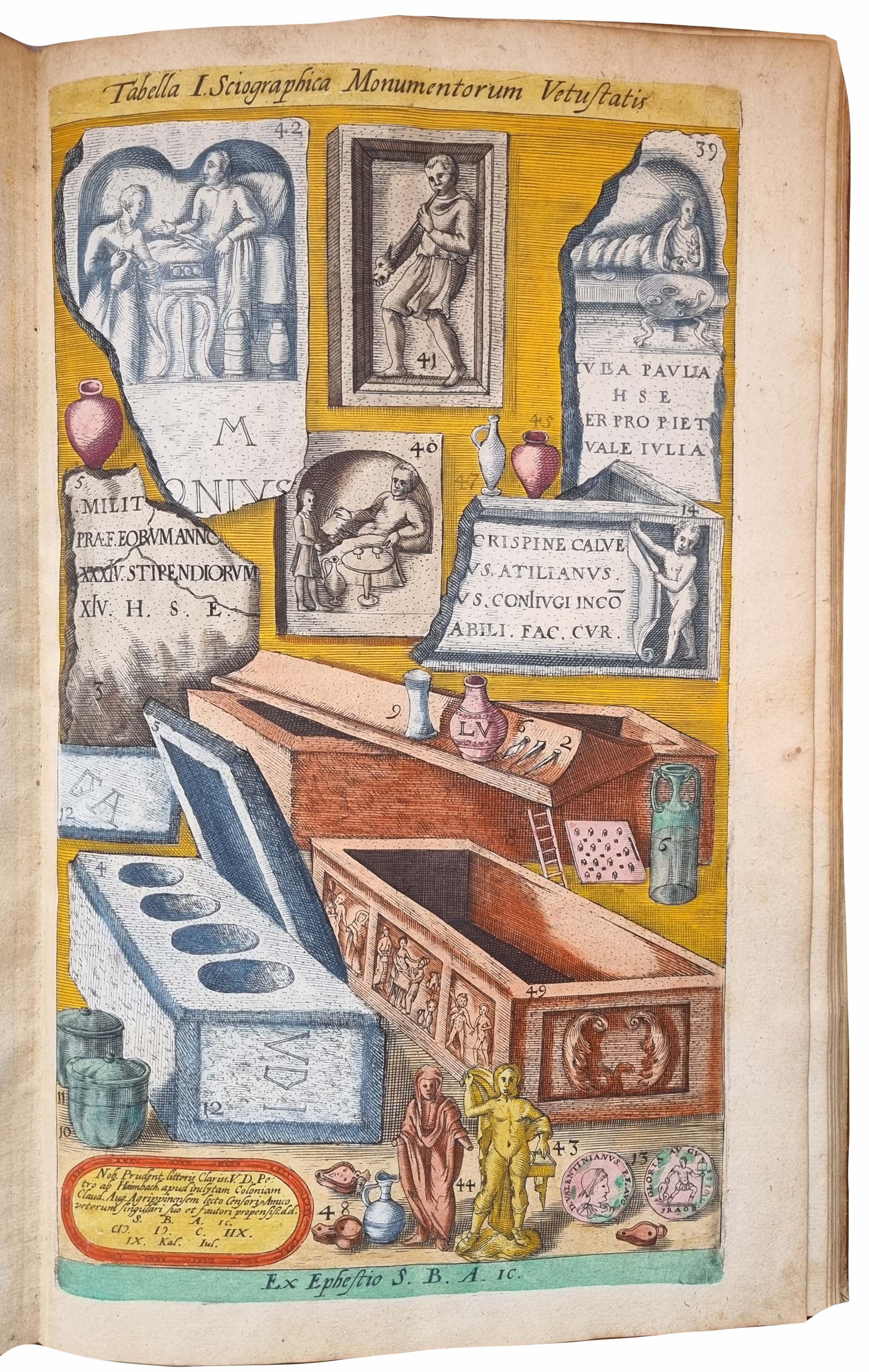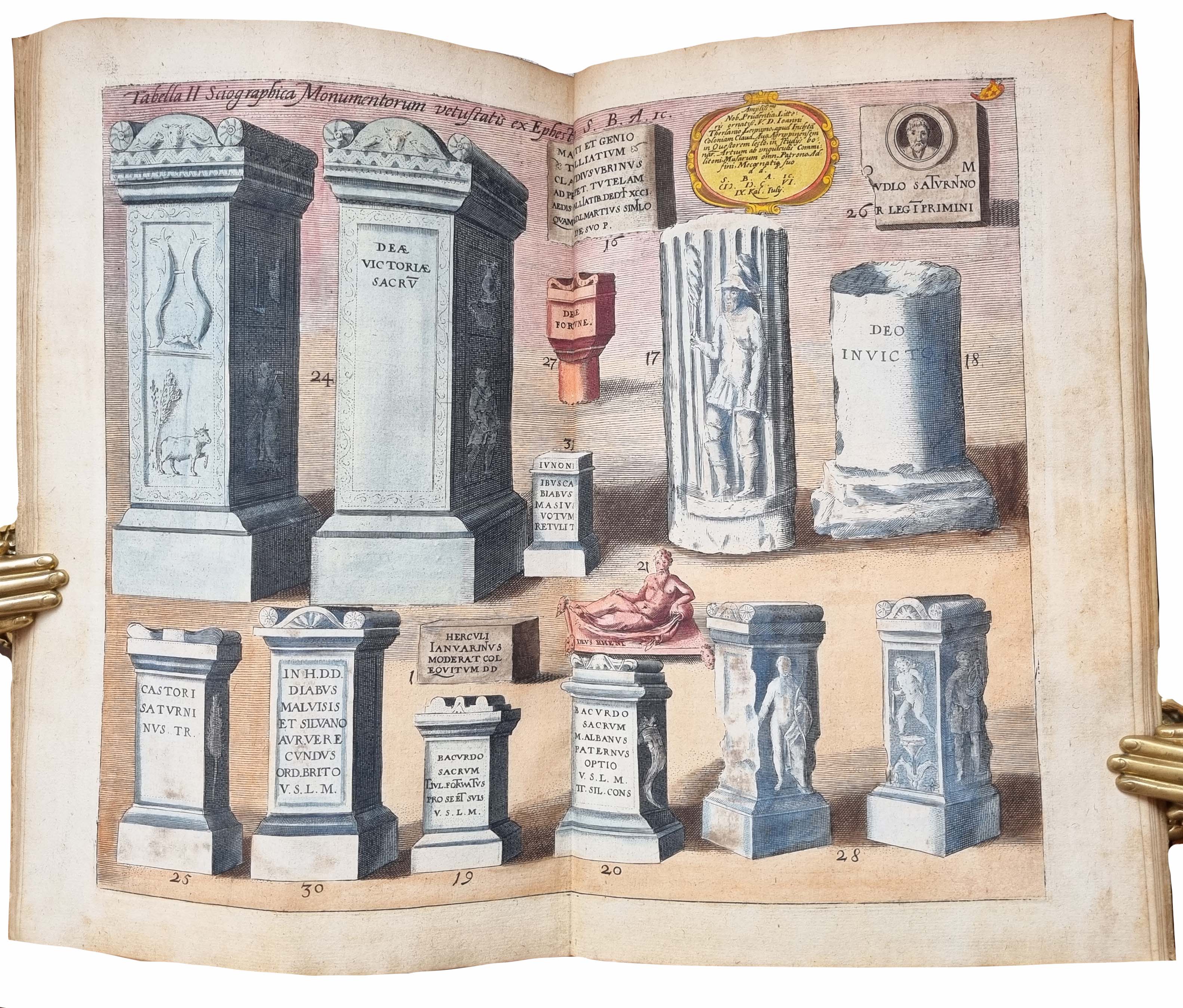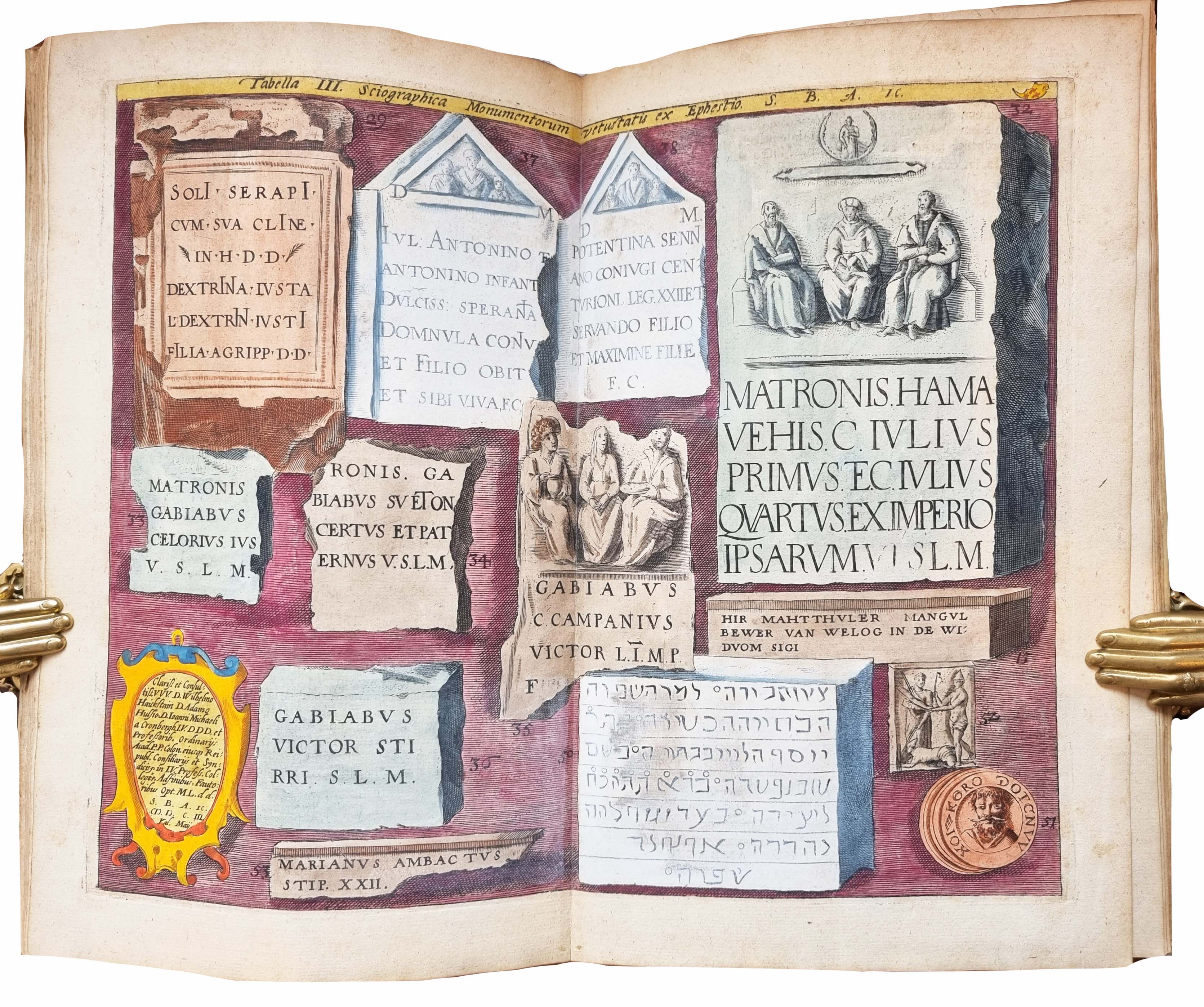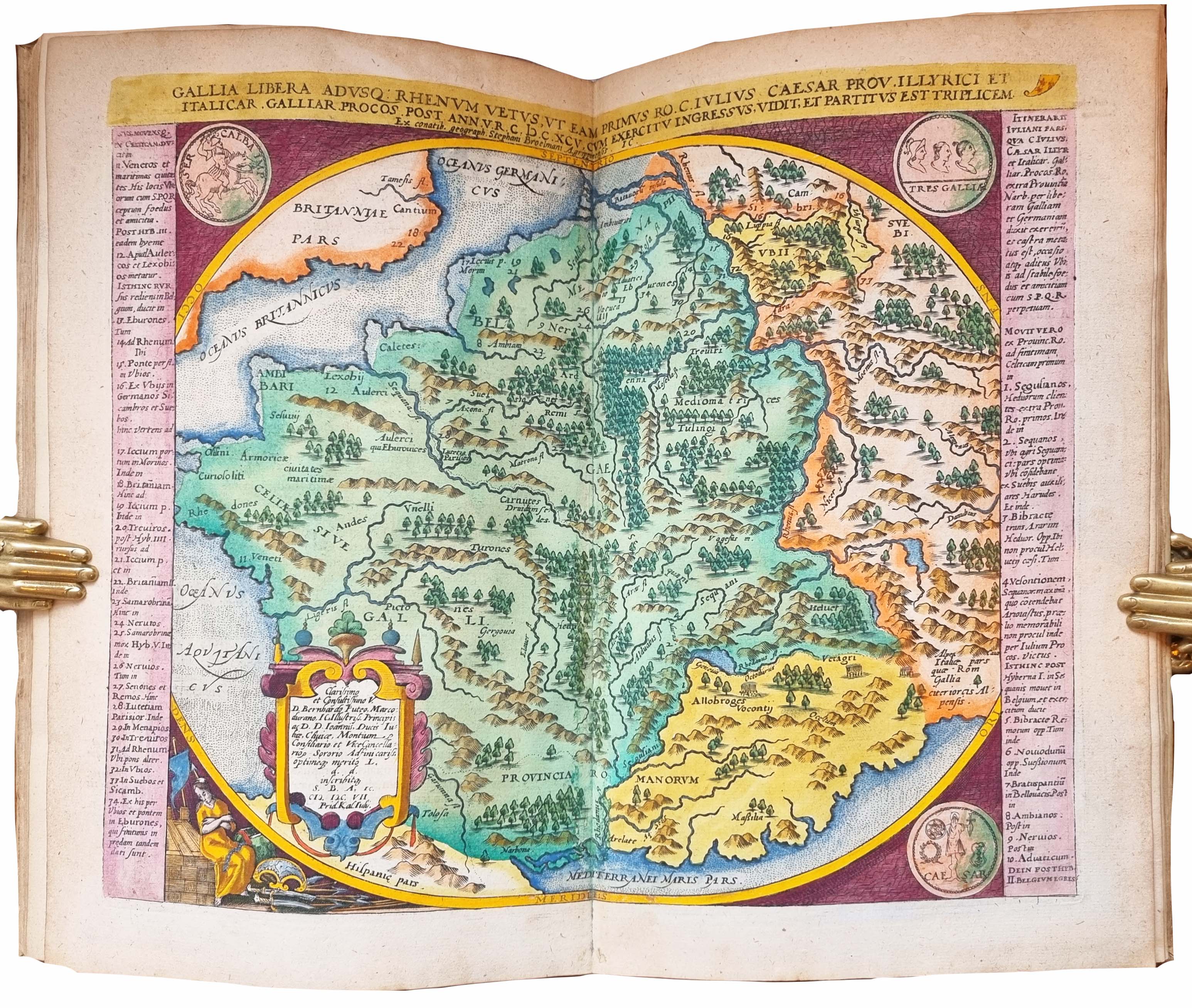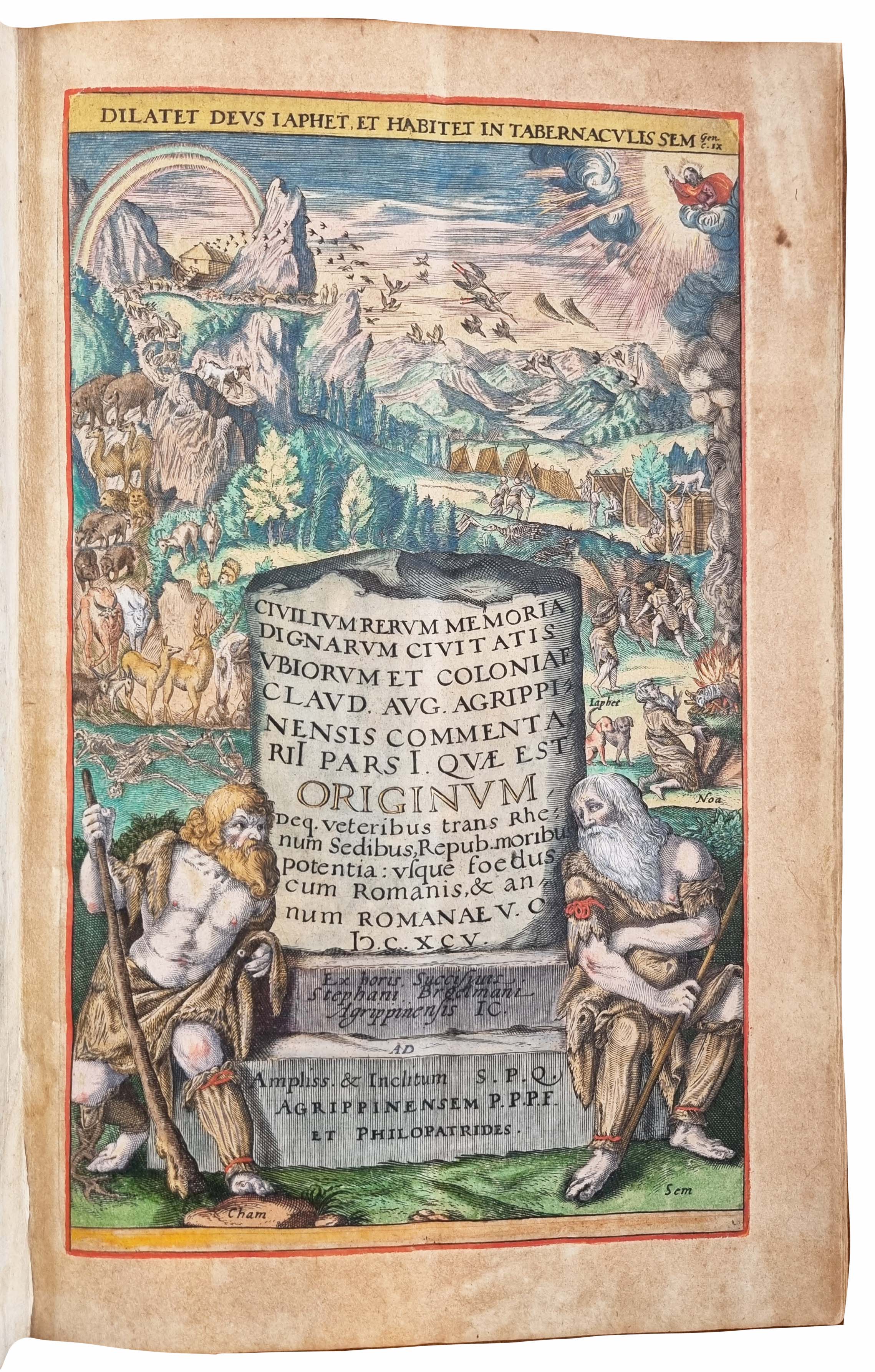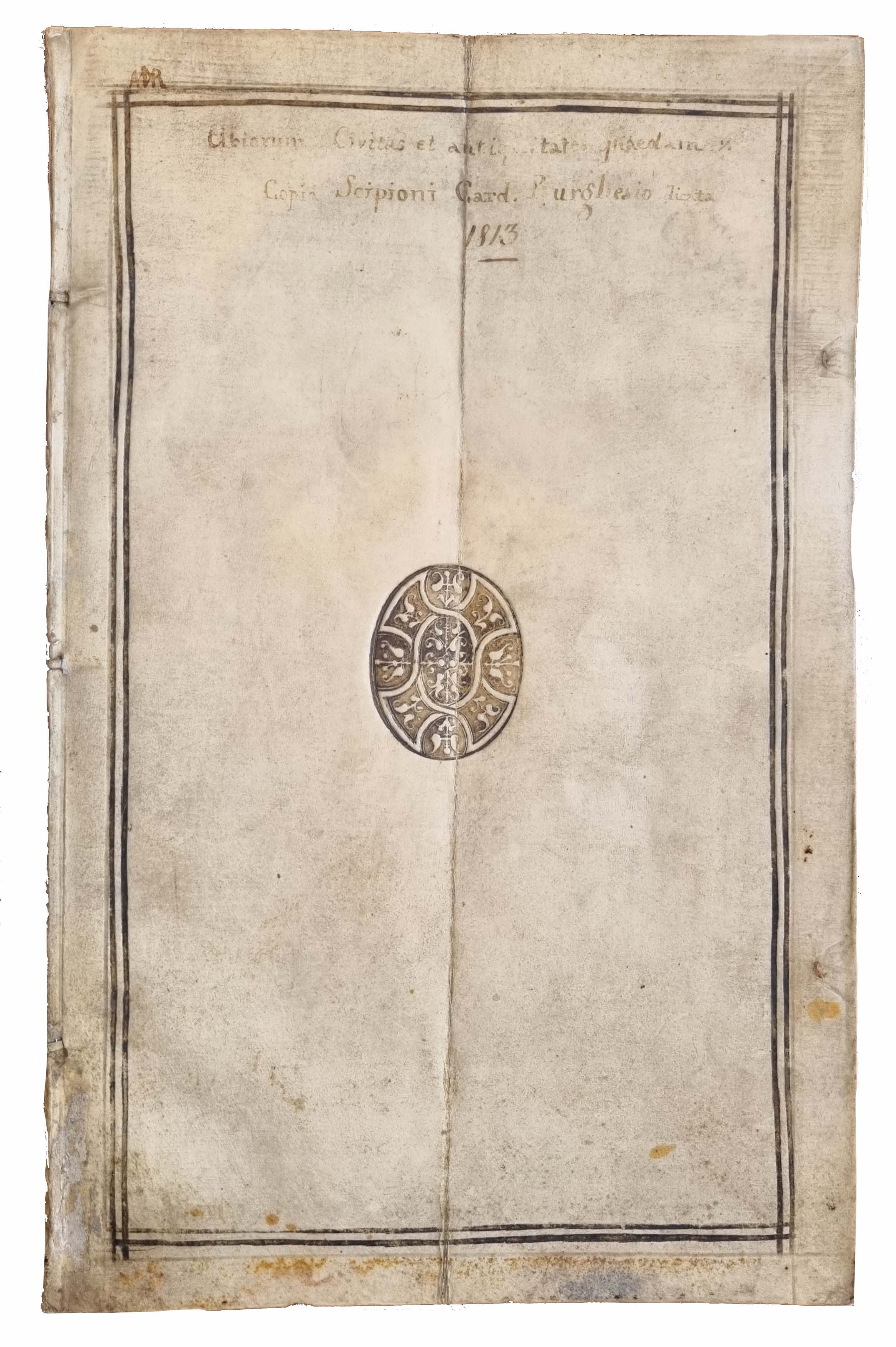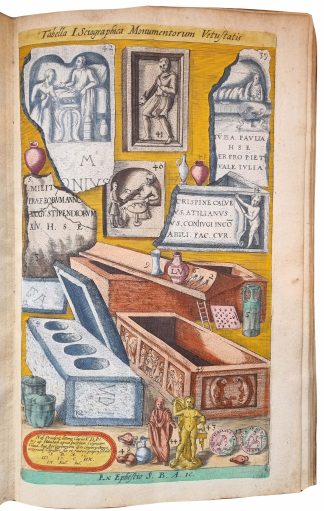BROELMANN, Stephan.
HAND-PAINTED PRESENTATION COPY WITH AUTHORIAL MANUSCRIPT
Epideigma, Sive Specimen Historiae (…)
Cologne, Gerard Grevenbruch, 1608£12,500.00
FIRST EDITION. Folio, two parts in one, ff. 36 (unnumbered, including 14 full-page and double- page hand-coloured engravings, lacking blanks before I 1 and O 1 which appear in some copies), bound with: 3 manuscript ll. in brown ink (charming contemporary cursive, double column), monogram of author ‘SBA IC’, and 1 folding plate from Braun and Hogenberg’s ‘Civitates Orbis Terrarum’ (also coloured). Roman and italic letter, woodcut floriated initials, headpieces with foliage and masks. Handsome engraved frontispices, first with central illustration of a plinth surrounded by Noah and his sons, landscape with animals and mountains in the background, second with large arch and standing figures of Roman aristocrats and soldiers, statues, putti and angels above and below, historical maps of Cologne, Europe and Asia (marginal tear at fold), illustrations of Roman antiquities, all hand- coloured. Browning to a few ll., occasional very light foxing, wormholes to outer blank edges of last ms. fol. An excellent copy, t-p on thick paper, in contemporary vellum, covers double blind ruled, decorated oval centrepiece, spine lightly repaired. Ms. presentation inscription to Cardinal Scipione Borghese (1551-1622) to t-p, ms. “Ubiorum civitas et antiquitates quaedam | Copia Scipioni Card(inali) Burghesio dicata 1813’ to upper cover. In folding box.
Stunning presentation copy to Cardinal Scipione Borghese, with handsome colouring, of the first edition of this this beautifully illustrated work on the history of Cologne by Broelmann. This unique volume includes an additional fold-out map of the city accompanied by a manuscript description written by the author himself and signed with his initials.
Stephan Broelmann (1551-1622) was a jurist and professor of Law at the University of Cologne, born to a wealthy and well-connected patrician family. Extremely fond of history and archaeology, he was also a remarkable researcher and an active collector of Roman antiquities. For several years, alongside his activity as a lawyer, Broelmann worked on an ambitious four-volume work on the history of Cologne which remains incomplete in manuscript form. Only a small part of it was published in this lavishly illustrated edition, in two parts, titled Epideigma’ (‘presentation’). ‘Epideigma’ is an extraordinary document, a history of Rhineland and in particularly of the city of Cologne in Roman times (until AD 475). Broelmann based his treatise on archaeological and written sources, as well as on two manuscripts in his possession: the accounts written by a monk of the Eberbach monastery and a codex of the “Annales Colonienses maximi”, known as ‘Chronicle of Gotfried von St. Pantaleon’.
The most attractive feature of this volume is the fourteen magnificent engravings, designed by the author and realised by two of the most prominent engravers of Cologne. Broelmann engaged Georg Braun (1541-1622), the geographer and cartographer who edited the famous atlas ‘Civitates orbis terrarum’ (1572) with Frans Hogenberg (1535–1590), and Johann Hogenberg (1594-1614), portrait engraver and son of Frans. The plates – preceded by dedications to dignitaries, academics and clerics – contain historical maps of Germany, Europe and Asia, charming views of Cologne in its early days and also a fascinating series of artefacts, including statues, inscriptions and coins. Remarkably, the drawings show the position of the Roman wall around Cologne, and record a collection of antiquities which helped modern historians dealing with a large number of inscriptions that have been destroyed by war or urban development.
At the end, the volume includes one large additional map depicting contemporary Cologne, by Braun and Hogenberg (father), which appeared for the first time in Civitates orbis terrarum’ (1572). On the plate, a series of hand-written numbers and letters correspond to streets, buildings and other main features of the city, which are all catalogued and described in three manuscript leaves. The manuscript is signed at the end with the initials “S.B.A. IC”, which stand for the name of the author: “Sebastian Broelmann Agrippinensis”, “Iuris Consultus”, meaning expert in law. The charming cursive calligraphy corresponds perfectly to Broelmann’s personal handwriting, as we were able to confirm through a careful comparison with images of his original manuscripts (preserved at the Historischen Archiv der Stadt Köln, Best. 7030, Chroniken und Darstellungen, 74, 75 and 76).
This unique manuscript section and the presentation inscription to the title page suggest that this copy was gifted to Scipione Borghese (1551-1622) by the author himself, who included an additional plate with his own notes as a further homage to this prominent Italian Cardinal, art patron and collector. Moreover, the entire volume is beautifully hand-coloured and this would have been appropriate for a gift destined to such a high-profile patron. The variety, brightness and vividness of the colours are outstanding and reflect the taste of the Dutch Baroque period: different shades of green, blue, grey, yellow, orange, purple, red, brown and even gold and silver were applied with extreme precision by an artist of great expertise and creativity. Here and there, the decorator added small bare and twisted trees which do not appear in the original design of the engravings.
A sign that the colouring of the final plate is contemporary and probably commissioned by the author is that the manuscript reference numbers and letters are clearly written on top of the paint. In addition, on the verso of all plates, green areas appear as brown shadows under a UV light – indicating that colour has oxidised. In the Renaissance, greens were made from verdigris, a substance that oxidises over time when exposed to light and humidity.
USTC 2092867; VD17 23:233223F; BM STC Ger 17th century, B2134. Not in Brunet or Graesse.In stock


